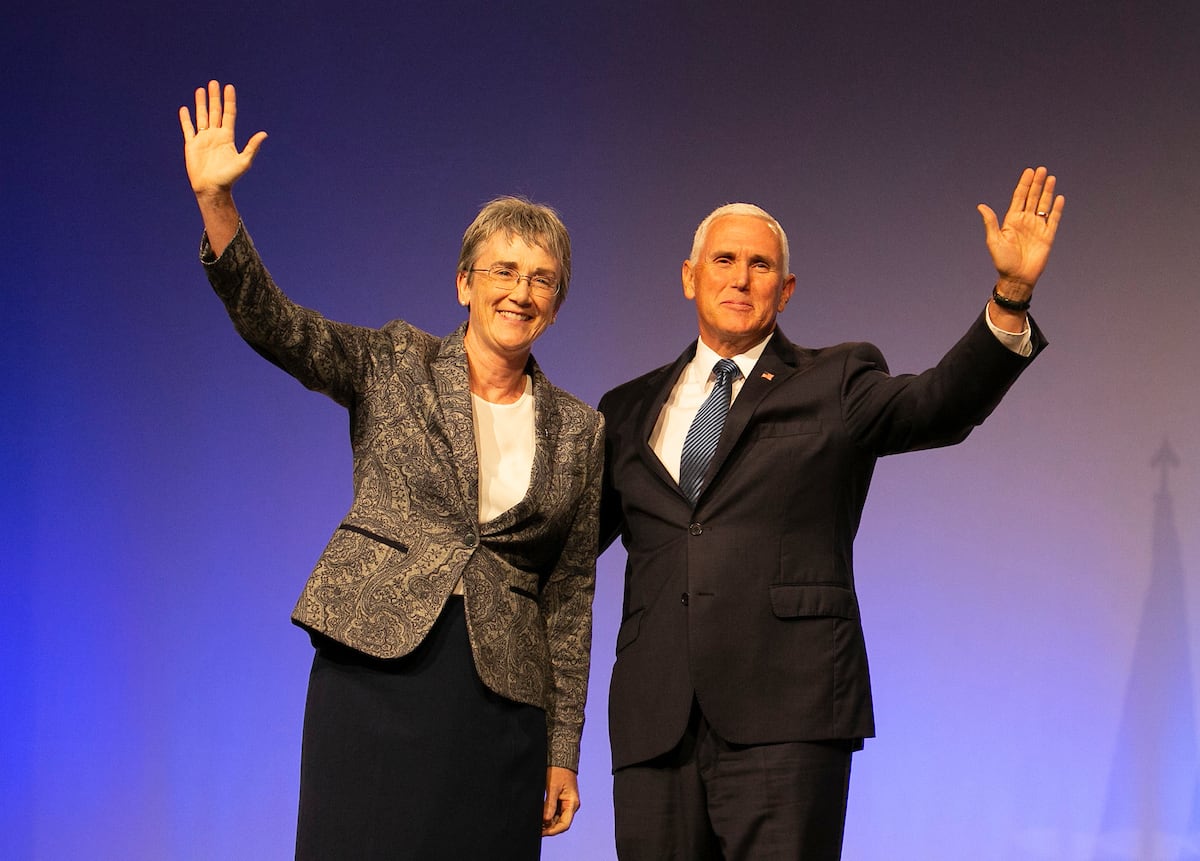NATIONAL HARBOR, Md. — If China launched an attack on an Air Force satellite, which military official would be responsible for defending the constellation? Right now, there’s not always a clear answer, but that’s one of the questions the service hopes to answer this November during a new series of tabletop exercises, a one-star said Wednesday.
The first ever “Doolittle Series,” which will run from Nov. 5 to 9, is meant to help the service get a better grasp on future command and control constructs that loop in space and cyber operations, said Brig. Gen. Chance Saltzman, who is leading the service’s “multi-domain command and control” efforts.
Multi domain command and control is one of Air Force Chief of Staff Gen. Dave Goldfein’s biggest priorities, but figuring out how to connect air, space and cyber operations so that operators can quickly make informed choices is tricky business — and an often esoteric one that is difficult to convey to lawmakers and industry.
Click here for more from the Air Force Association 2019 conference!
Saltzman wrapped up a yearlong multidomain command and control review last year, which has spawned an implementation plan that was recently signed off on by Air Force Chief of Staff Dave Goldfein, as Goldfein told Defense News on Sept. 19 interview. Under the plan are three prongs of effort: generating concepts of operation, obtaining advanced technologies, and training and education.
The Doolittle Series is meant to drive future concepts of operation, Saltzman told reporters in a Sept. 19 roundtable at the Air Force Association conference. To do that, multiple teams will be tasked with using various C2 structures — including current constructs, a clean-sheet C2 architecture, and a hybrid version with new and old elements — to solve different scenarios.
For example, if there is a satellite that is critical for accomplishing a mission in a specific area of operation, who is responsible for protecting it?
“That’s a simple question,” Saltzman said, but with a difficult answer.
RELATED

Today, an area air defense commander is tasked with air and missile defense, but “they don’t really think to much about satellites,” in part because they don’t need to — space is currently not contested in the way it could be in the future, he said.
“Is that area air defense commander responsible … or does now STRATCOM or soon to be US Space Command take responsibility to defend this?” Saltzman asked.
“And if there are two different commanders outside the structure that are responsible for critical assets, who sets priorities and who defends them? Do you have to have a space component like you have an air component, or can you rely on a support relationship through a different combatant command? I think there’s good arguments for both.”
Industry has also been working independently on multidomain C2 experiments in anticipation of future business opportunities that could germinate once the Air Force figures out exactly what new technologies it needs.
Over the past few years, Lockheed conducted a series of demonstrations of an open architecture air operations center, according to an Air Force Magazine report from February. Breaking Defense has also described efforts from Raytheon to lay out potential concepts of operations for multi-domain operations.
But right now the Air Force is more focused on process than products, and Saltzman noted that he’s concerned that focusing too much on fulfilling requirements could come at the expense of better and more creative approaches.
“I don’t know what platforms and sensors are going to be integrated in or that I’m going to need to integrate in in 2040 or 2050. And so we have to think in terms of process. We have to think in terms of just building structure that’s flexible, it’s agile, it can modify and shift as we move forward in change our concepts,” he said.
“This isn’t to say that the requirements don’t exist. This is to say that the requirements that you write are a starting point where a relationship between the provider and the user go hand in hand as you work together to continue to define the product.”
Over the course of the conference, Goldfein met with executives with various defense primes to talk about emerging technologies that could bring more multi-domain capability to the service, he said. During one discussion, one company head began talking about developing a new missile that will be steerable by the aircraft that launches it.
“I said, ‘Ok that's interesting, but let me tell you where we need to go.’ It needs to be steerable by aircraft, by a ship on the surface, by a small special operations team, by a Marine Air Ground Task Force, by a Navy Seal team,” Goldfein said. “If you really want to get me interested, then show me how you built this new technology to be able to connect, share and learn so that we can take advantage of our asymmetric attributes going forward.”
There won’t be any one product — a single multidomain command and control machine, for instance —that the Air Force will be able to contract for and rely on going forward. Instead, Saltzman wants to provide an overarching framework that lays out shortfalls and opportunities like using machine learning to do rapid analysis of full motion video.
Then, reach out to industry to experiment with their technologies and iterate.
“There needs to be data storage and data management. There needs to be a transportation lab for how you move things around, which includes bandwidth and datalinks and interfaces. There are going to have to be tools that provide analysis for situational awareness, that provides decision-support for decisionmakers,” he said.
Valerie Insinna is Defense News' air warfare reporter. She previously worked the Navy/congressional beats for Defense Daily, which followed almost three years as a staff writer for National Defense Magazine. Prior to that, she worked as an editorial assistant for the Tokyo Shimbun’s Washington bureau.







